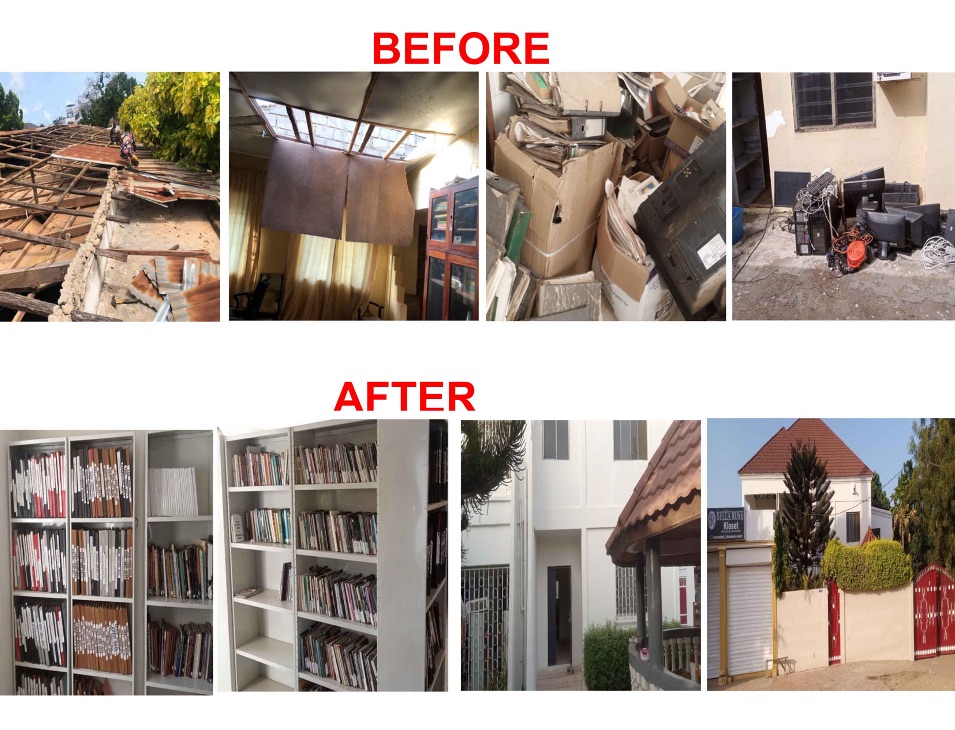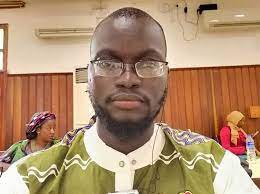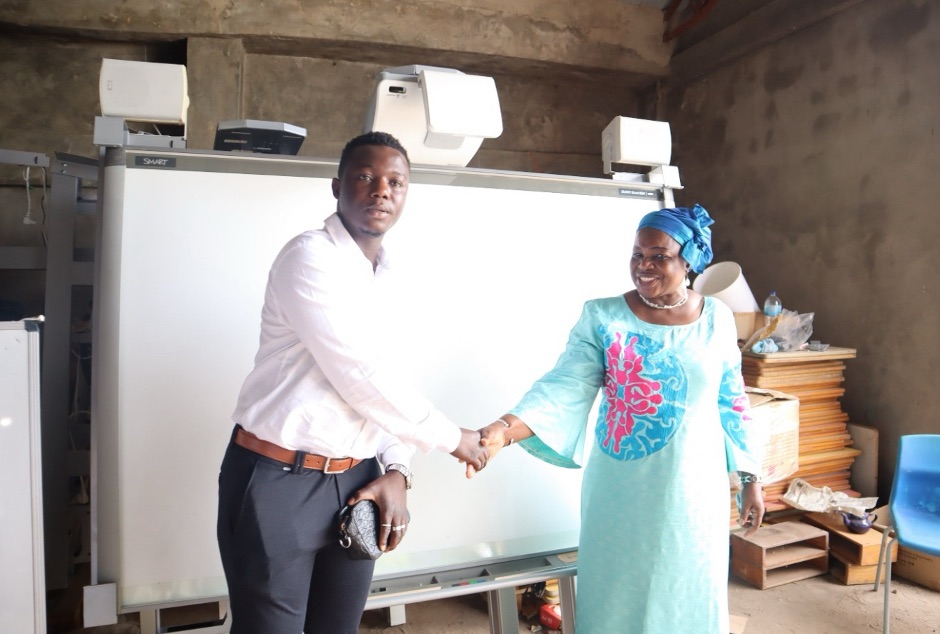By Yunus S Saliu
This medium can authoritatively report that a new lease of life has been injected into the RDD unit of the National Centre for Arts and Culture (NCAC) after a turbulent storm destroyed the roof and building of the depository of its oral archives located at Fajara along Kairaba Avenue in July 2023.
The oral archives also referred to as the Research Documentation Division (RDD) of the National Center for Arts and Culture of the Ministry of Tourism and Culture contain 6000 audio tapes, 3000 transcribed files, and over 4000 oral archival documents, including the Gambia newspapers library with newspapers collection dating to the 1970s.
RDD is used by university students and international researchers interested particularly in pre-colonial Gambian history and the archive is managed by the NCAC.
In July of last year, staffs were shocked to see the roof of the building, containing the archives blown off a windstorm leading to water gushing into the depository, threatening to destroy the memory of the Gambian Republic. The archives, which include oral histories collected since 1946 on various aspects of Gambian history and culture, settlements genealogy, traditional knowledge history, pre-colonial state, folklore, proverbs and riddles are indeed endangered.
However, thanks to a UNESCO training attended by some members of the archive held in Saly, Senegal in 2022 under the theme Memory of The World Project, the staff were able to quickly intervene and rescue all archiver holdings.
Speaking to this reporter, Hassoum Ceesay, the Director General of the NCAC affirmed thatnot a single archival file was lost, describing it as a miracle indeed.
“But thanks to the step-down training that the staff received after senior members of the archives attended the UNESCO training in Dakar, the disaster was averted and all the materials were rescued,” the NCAC boss said.
According to him, the Gambia’s Ministry of Finance came up with emergency funding in August to enable the NCAC to hire the most suitable building to house the archives.
The Director General therefore commended the Permanent Secretary and Minister of Finance for their quick action, and support for the salvation of the memory of the Gambian Republic.
He also commended the Director General of the Gambia Procurement Authority for being very flexible in helping to make sure that the procurement process was done without delay.
Mr. Hassoum Ceesay explained: “For three weeks, we were all in shock because the entire archive holdings had to be removed to temporary storage. But thanks to the support of the Ministry of Finance, through the Ministry of Tourism and Culture, a new building was rented and now the archives have been safely and comfortably transferred. The working environment is better and the archive is now in a better conservation state.”
He said the NCAC will continue to work with the UNESCO Memory of the World Program to ensure that the staff is trained to continue to be able to handle such disaster risk and mitigation scenarios.
Mr. Ceesay stated that efforts would be stepped up to ensure that materials in the archives will continue to be housed in favorable conditions, adding that the archive interests The Gambia, and a lot of information also concerned Senegal, Guinea Bissau, and Guinea Conakry.
“So, the archives are in a way Pan-African archives, having a Pan-African memory,” he noted.
He expressed the resolve that the NCAC will now continue to work to make sure that the Gambia’s oral archive located in Fajara is listed in the UNESCO Memory of the World for it to continue to remain a source of historical knowledge that brings together the similarities and the culture and history of the West African sub-region.





